How To
Latest
Pet Care
How to Groom Your Dog at Home with the Right Dog Grooming KitMarch 19, 2025
We Value Every Life

Despite their hyperactive demeanour, puppies are incredibly vulnerable to harm due to their underdeveloped immune systems. You must take your new puppy to the vet as soon as possible after bringing it home. It is important to begin preventive care for healthy puppies as soon as possible to remain healthy and treat sick puppies so they do not get critically ill or even die. As a new puppy owner, you may be wondering what to do for the puppy first vet visit checklist. This guide will help you.
Before bringing a puppy into your home, locating a vet clinic is smart. You may ask around amongst friends, family, and your breeder for suggestions, or you could read reviews online. Having a good connection with your vet is crucial, so be sure to choose one that:
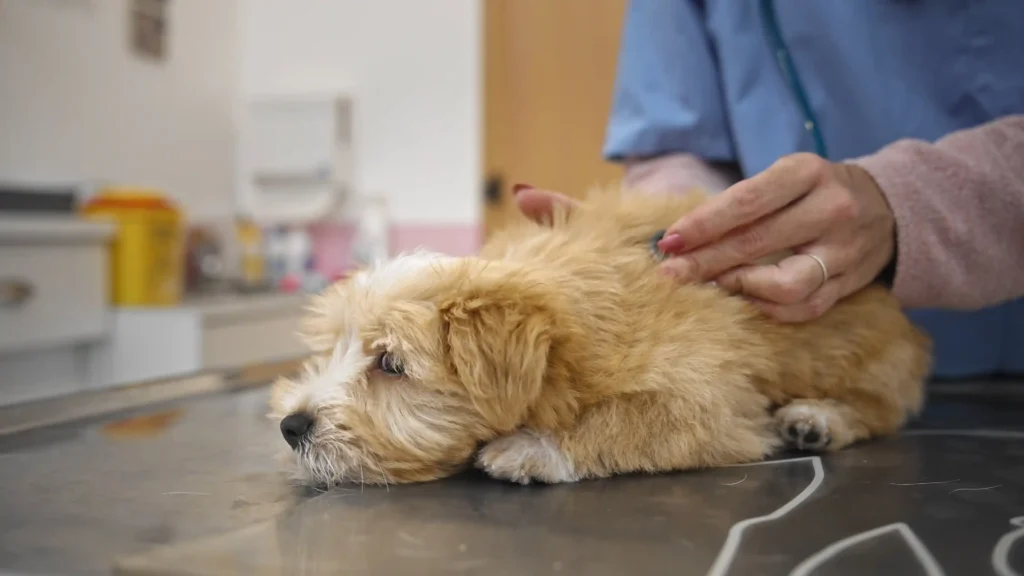
Before releasing their young to new homes, many dog breeders and shelters begin taking the puppies to the vet. You should have documentation that specifies the services rendered, the dates of those services, and when you should bring your puppy back for his next checkup.
It is recommended to take a new puppy to the vet within a few days after picking it up, regardless of what the shelter or breeder has done previously. In this way, the vet can easily review your puppy’s medical history and treat any issues that have gone unattended. In addition to a thorough history and physical, the doctor may order laboratory testing to rule out serious health issues. It is advisable to become aware of issues before the expiration of any health guarantees the breeder provides.
The usual interval between visits to the vet for a puppy is every three to four weeks, beginning at around six to eight weeks of age and continuing until the puppy is four or five months old. Vaccination for puppies often begins between 6 and 8 weeks of age. Two visits spaced three to four weeks apart will typically be sufficient for puppies whose first immunizations are given once they are four or five months old. Your veterinarian can modify this plan according to your puppy’s medical history and current needs.
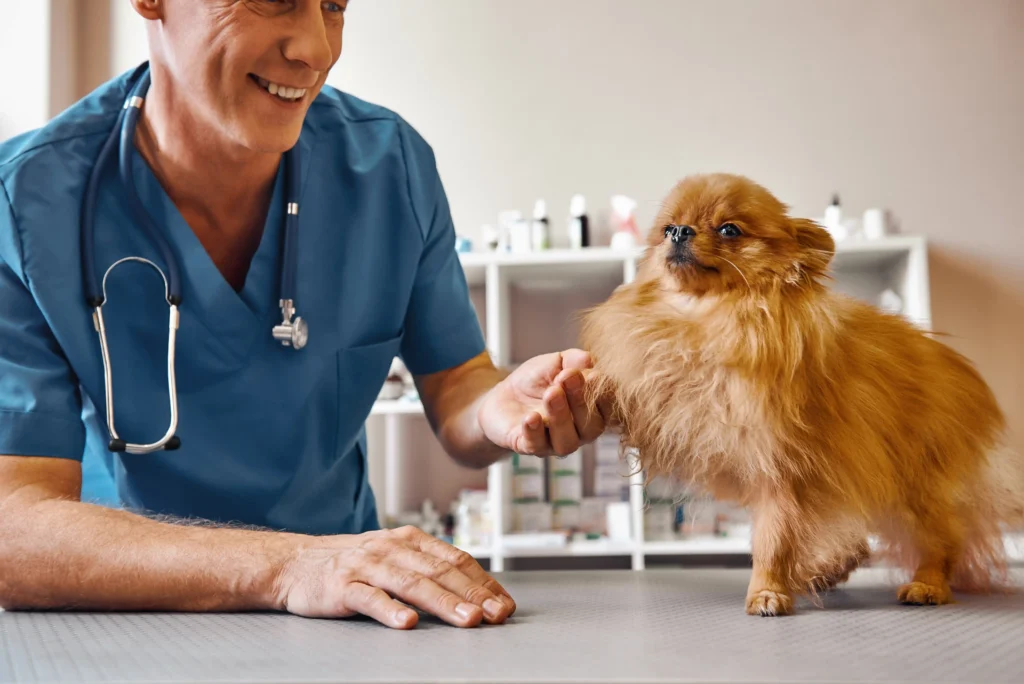
The waiting areas at veterinarian offices can be hectic and full of people and animals that most puppies will never meet. Why not schedule your appointment for a less busy time of day so you can relax the whole time? Perhaps your vet’s office receptionist can advise you on the optimal time to bring in a new puppy.
Take care not to let puppies fall to the floor while waiting to see the vet. If you want to ensure your puppy stays safe until they get their vaccine, keep them off the floor. Even if you bring them inside, it could be challenging to hold a wiggling puppy while it investigates the unfamiliar sights and smells of the vet’s office. Consider bringing your canine companion in a crate or another easily transportable container. While they wait, you can keep them occupied by bringing along:
Gather as much information as possible before taking your puppy to the vet for the first time. Was your puppy brought to you from another nation or another planet? Have you noticed any behavioral issues as your puppy adjusts to his new home? Is there no diarrhoea or vomiting in your puppy’s diet? How is the progress on potty training going for you?
The more information you can give the vet at the appointment, the better. If you don’t know the answer, but calling back with the answer is always an option. Following are the puppy first vet visit checklist you can checkout-
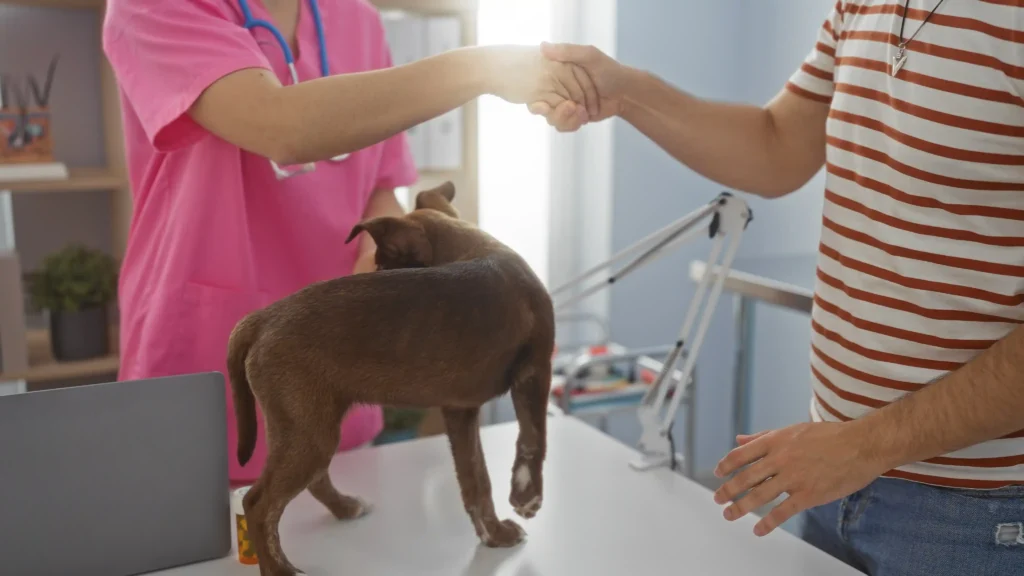
Before seeing your puppy, the vet will ask many questions about its background and current well-being at home. Then, they will:
To check for intestinal parasites, your veterinarian may need to take a stool sample from your pet if you forgot to bring one from home. A tiny blood sample may also be drawn for heartworm testing if your dog is six months old or older. They do additional laboratory tests as and when necessary.
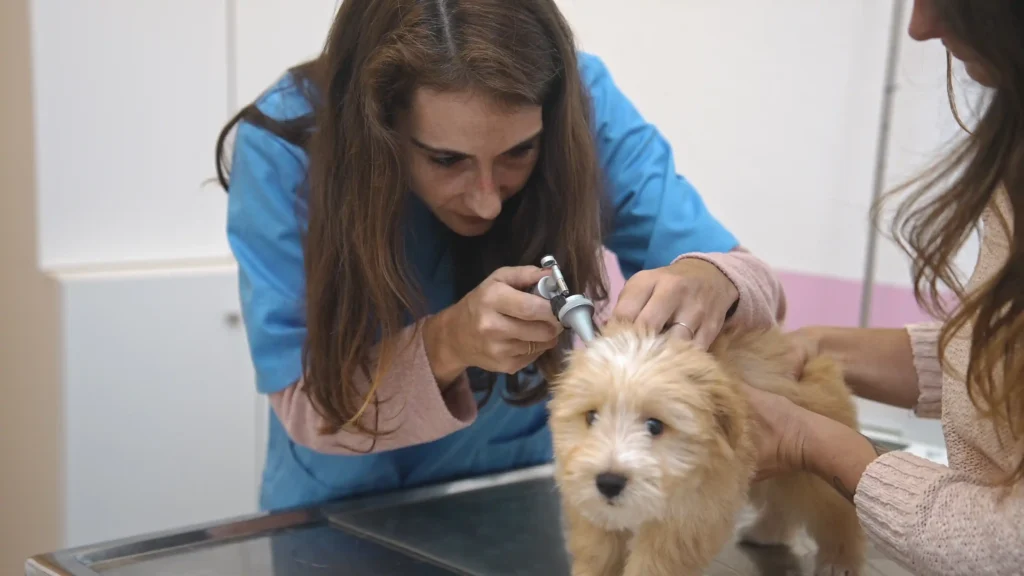
Some pets may experience anxiety when visiting the vet. Your puppy will understand you’re not anxious if you maintain a composed demeanour. You can distract your puppy with treats every once in a while, and when they do something good—like standing up for the vet or letting them touch them—make sure to reward them with lots of attention. Make every effort to ensure they have a pleasant experience while on the examination table. Because the vet’s table is rough and has the odour of disinfection, it can be helpful to bring along their favorite blanket so they can feel more at ease.
Vets will discuss several critical dog care topics with you
When you take a puppy to the vet for the first time, most procedures are standard and won’t cost you a fortune. Expect to pay between $75 and $100 for each visit to the vet for your puppy, though this amount might vary greatly depending on your location. Vaccination clinics, pet insurance, and veterinary wellness plans can all help you stretch the expense out or keep it low.
The expense of taking a puppy to the doctor at the beginning might seem exorbitant, but it will be money well spent in the long run if it prevents major health issues. In the end, a healthy dog is a happy dog.
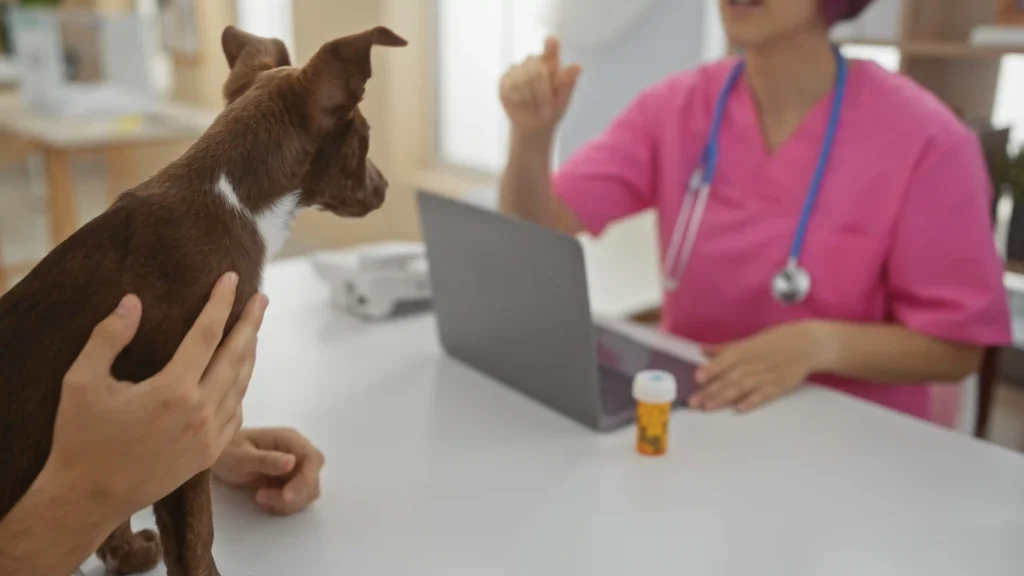
Do not hesitate to leave the automobile home if walking can get you to your local vet. Taking your puppy on a pleasant stroll will help him unwind and make the most of the situation.
Remember to bring your puppy’s favorite snacks to each vet appointment and bring your puppy’s favorite toy or treat along for the ride to the clinic; your furry friend is guaranteed to be happy no matter what.
It is highly recommended that you make an appointment for your puppy’s vet visit first thing in the morning. The waiting room is likely to have fewer people and dogs, which will make your puppy feel more comfortable. You should also keep the dog outdoors until your command to come inside is ready to be given.
Here we concludes our guide on puppy first vet visit checklist. While your vet should provide you all the knowledge you need to raise a healthy puppy, reviewing the points made above is a good idea. Do not hesitate to ask your veterinarian to clarify anything if you feel they omitted important details or if the information they gave you was unclear. New dog owners should take their pets in for annual checkups after giving their puppies all of their recommended vaccines and worming treatments. They may ensure their dog is healthy and fit by taking them in for checkups and yearly booster shots.
Pet N Plants, a passionate group of authors who are devoted pet and nature enthusiasts. With over 15 years of experience in pet and plant care, our authors bring a wealth of knowledge and a deep love for all things flora and fauna. Each member of our team is dedicated to sharing insightful tips, detailed care guides, and the latest trends to help you nurture your beloved pets and plants. Whether you're a seasoned gardener or a pet parent, our experts are here to support your journey in creating a thriving, vibrant home environment for all your living companions.
0